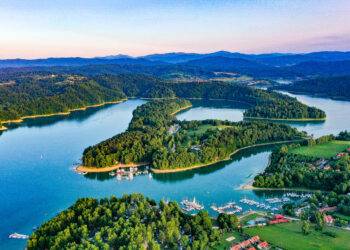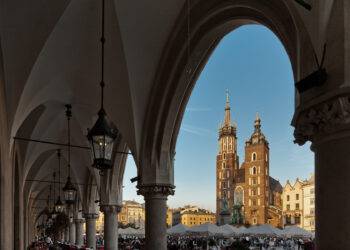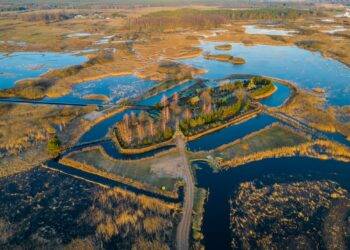Known for its historical charm and breathtaking coastal scenery, Poland’s Velo Baltica cycling route along the Baltic Coast is emerging as Europe’s underdog leader in slow-travel biking. Spanning more than 230 kilometers, this scenic trail offers cyclists a unique blend of natural beauty and historical landmarks, from romantic windmills and medieval Gothic churches to remnants of World War II forts.
In February, despite the chilly and overcast weather, cycling enthusiasts are still drawn to Velo Baltica. Starting at the border town of Świnoujście near Germany and stretching to Ustka, this route takes riders through the stunning West Pomeranian Voivodeship region. The trail is characterized by its flat, family-friendly terrain, making it accessible for cyclists of all levels.
Slow Tourism at Its Finest
Velo Baltica epitomizes slow tourism, encouraging unhurried exploration of Poland’s Baltic coastline. The route’s gentle paths and dedicated cycling lanes invite riders to enjoy pastoral landscapes and the refreshing Baltic breeze at their own pace. Along the way, cyclists can explore historical sites such as the 19th-century Gerhard Fort in Świnoujście and the underground bunkers from the 1930s.
Nature lovers will appreciate the trail’s passage through Wolin National Park, home to Poland’s highest coastal cliffs and a bison reserve. Highlights also include the ruins of a medieval Gothic church in Trzęsacz and the scenic Niechorze Lighthouse, which offers panoramic views of the expansive Baltic dunes.
From Kołobrzeg to Mielno: A Journey Through Time
One particularly captivating section of the Velo Baltica is the 35-kilometer stretch from Kołobrzeg to Mielno. Kołobrzeg, a town known for its vibrant summer resorts and historical sites, serves as an ideal starting point. Attractions include a 26-meter-high lighthouse and the Gothic Cathedral Basilica, both restored to their former glory after World War II.
Cycling out of Kołobrzeg, riders traverse the Eastern Ekopark’s protected swamps and dunes, where a wooden bridge once swept away by melted spring waters has been rebuilt. The expansive Podczele dunes provide a serene backdrop as cyclists continue to the lively resort towns of Sianożęty and Ustronie Morskie, each featuring charming piers and bustling summer activities.
Cultural Heritage Along the Coast
The route continues through Ustronie Reseve’s thick beech forests, where ruins of 1950s artillery batteries lie hidden among the trees. The journey then leads to Gąski, home to a well-preserved red-brick lighthouse dating back to 1877. From here, the path winds through residential areas and into Sarbinowo, known for its Neo-Gothic Church of the Assumption of the Holy Virgin Mary.
Cyclists conclude their journey in Mielno, a town that seamlessly blends 19th-century villas, Socialist-era resort complexes, and modern seaside hotels. Despite the winter season, Mielno’s boardwalks are filled with people enjoying the sea views. Local delicacies like żurek (fermented rye soup) and pierogi ruskie (potato and cottage cheese dumplings) offer a taste of Polish hospitality.
Embracing the Baltic Breeze
Velo Baltica’s appeal lies in its ability to combine the meditative experience of cycling with the discovery of historical and natural treasures. The trail’s proximity to the beach allows riders to fully immerse themselves in the sounds and sights of the Baltic Sea. This slow-travel biking route is more than a mere journey; it’s an invitation to explore Poland’s rich cultural and natural heritage at a leisurely pace.
For those seeking a peaceful escape and a deeper connection with the landscape, Velo Baltica offers a perfect blend of adventure and tranquility. Whether cycling through the picturesque towns or taking in the coastal scenery, this route promises a memorable experience for all who venture along its paths.


















